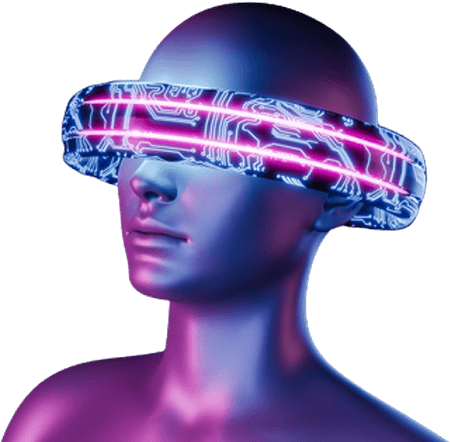Can Claude AI Be Detected? [2023]
Claude AI has sparked intense debate around their potential impact. One key concern is whether these chatbots can be detected, especially when used without disclosing their artificial nature. In this comprehensive analysis, we’ll explore the technical capabilities of Claude and other AI chatbots, look at existing detection methods, and consider the ethical implications of bot detection.
How Claude AI Works
To understand if Claude can be detected, we first need to examine how it works under the hood. Claude was created by Anthropic, a San Francisco startup founded in 2021. It is an example of a large language model (LLM), a type of AI system trained on massive text datasets to generate human-like text.
Specifically, Claude AI is powered by Constitutional AI, Anthropic’s proprietary AI safety technique. Constitutional AI constrains the model to generate helpful, harmless, and honest responses through a process called “self-supervision.” This technique does not rely on human labeling of training data.
Claude demonstrates impressive natural language capabilities like other LLMs such as Google’s LaMDA and Meta’s BlenderBot. It can maintain multi-turn conversations, answer follow-up questions, and admit when it does not know something. Anthropic claims Claude is significantly safer than previous chatbots due to Constitutional AI.
Existing Bot Detection Methods
There are a few existing techniques that aim to detect if a conversational agent is human or AI:
- Turing Tests – These tests, named after computer science pioneer Alan Turing, involve human judges conversing with an unknown entity and determining if it is human or AI. Claude can often pass simpler forms of the test. However, more advanced Turing tests with follow-up questions and conversations spanning multiple turns pose greater challenges.
- Technical detection – Analyzing the software stack, network traffic, latency, and other technical signals can sometimes reveal the artificial nature of a conversational agent. However, this becomes more difficult as the AI system is better designed to mimic human patterns.
- Linguistic analysis – Examining language patterns like repetition, lack of world knowledge, and grammatical errors may indicate an artificial system. But Claude and other LLMs are trained to minimize these tells and exhibit more human-like language.
- Intentional prompting – Asking specific questions designed to reveal an AI system’s limitations can force it to admit it does not know something. But Claude’s design allows it to politely indicate when it does not have enough information.
- Long-term conversing – Humans demonstrate learning over time conversing with the same person repeatedly. But remaining consistent over many conversations poses challenges for AI. Testing Claude over longer term interactions could reveal artificial patterns.
Overall, while these techniques have some success detecting older chatbots, Claude’s advanced AI poses a much greater challenge. Its Constitutional AI aims to make its behavior safer but also more human-like.
The Difficulty of Detecting Claude
There are several key reasons determining whether Claude is AI or human poses significant challenges:
- Large model size – Claude’s architecture comprises trillions of parameters, allowing more human-like conversational abilities. Large models are harder to detect as AI.
- Self-supervision – Unlike most AI trained on human-labeled data, Claude’s self-supervision process generates more natural language. This makes its responses less distinguishable from a human’s.
- Rapid pace of progress – AI conversational ability is improving exponentially fast. Tools that detect older chatbots quickly become outdated as the technology advances. Claude represents the state-of-the-art.
- Designed to mimic humans – Anthropic specifically designed Claude to have natural conversations that mirror human responses and behavior patterns. This intentional human-like design makes detection difficult.
- No single clear giveaway – There is no singular, reliable “Turing Test” that can definitively label Claude as AI. Instead, persuasively determining whether it is artificial requires an ensemble of clues.
- Ethical considerations – Conversational AI like Claude is designed to be helpful, harmless, and honest. Aggressive interrogation techniques that try to force a mistake may be unethical.
The combination of Claude’s advanced AI architecture, self-supervision training approach, and explicit human-like design make reliably detecting its artificial nature a significant challenge, at least with current methods and technology.
Potential Future Detection Methods
While detecting Claude may be difficult today, there are several promising directions that may yield better detection capabilities in the future:
- Multi-modal testing – Testing consistency across different modalities like text, speech, and video could reveal gaps in AI abilities, as this cross-modality coherence remains difficult for current systems.
- Enhanced Turing Tests – More robust Turing Tests with expanded timeframes, personalized interaction history, and tests designed by experts in linguistics and psychology could improve detection.
- Hybrid human-AI detectors – Systems that combine human cognitive strengths with AI’s pattern recognition capabilities may enable more nuanced bot detection.
- Analysis of internal structure – Directly analyzing Claude’s code, parameters, and training methodology could conclusively determine its artificial origins, but this information may remain proprietary.
- Fingerprinting of generative models – Identifying unique fingerprints in the generative patterns of large language models like Claude could allow attribution to known AI architectures.
- Evaluation of long-term memory – Testing consistency on references to past conversational history over longer periods of time and across sessions.
While promising, these approaches still require substantial research and development to effectively and reliably detect state-of-the-art conversational AI.
Ethical Considerations of Bot Detection
The possibility of detecting advanced chatbots like Claude also raises important ethical questions:
- Informed consent – Should conversational AI disclose it is not human unless directly asked? Does using AI without explicit consent raise ethical issues?
- Right to obfuscation – Do AI creators have the right to make their systems difficult to distinguish from humans if used ethically?
- Liability – If harm occurs due to an AI system indistinguishable from human, is the creator legally responsible?
- Test integrity – Could advanced detection tests themselves be unethical, such as by deliberately trying to confuse the AI?
- Safety vs performance – Designing AI both to be safe and to maximize human-likeness poses inherent tensions. How should this trade-off be balanced?
- Beneficial usage – If AI bots are detectable, it could discourage their development and beneficial uses such as education and entertainment.
There are reasonable arguments on both sides of these issues, and ongoing debate is likely as advanced conversational AI continues proliferating. Carefully considering this ethical dimensions will be important as detection capabilities progress.
Conclusions and Outlook
In summary, reliably detecting advanced conversational AI like Claude presents significant technical challenges with current methods and knowledge. Its cutting-edge design and training approach aim to mimic human conversational patterns and abilities as closely as possible.
While future progress in areas like multi-modal testing, enhanced Turing Tests, and generative model fingerprinting may improve detection, these approaches still require major research breakthroughs. Ethical considerations around bot detection add further complexity to this issue.
Going forward, the conversation around AI ethics and safety will likely play a major role in shaping how systems like Claude are deployed. Designers may choose to make AI nature unambiguous by default, or to intentionally obscure it for some applications. Legal frameworks and industry standards will likely evolve to help address potential risks.
The measures companies take to detect and mitigate potential harms from advanced conversational AI warrant close scrutiny. But the mere difficulty of detecting systems like Claude does not necessarily warrant overly alarmist or reactionary responses at this stage. Maintaining nuanced perspective as this technology continues rapidly evolving will allow us to maximize its potential benefits while proactively addressing the novel societal challenges it presents.
FAQs
What is Claude AI?
Claude AI is an artificial intelligence chatbot created by Anthropic to have natural conversations through self-supervision training. It is powered by a large language model with trillions of parameters.
Why is it challenging to detect if Claude is AI?
Claude was explicitly designed to mimic human conversation patterns, making it difficult to distinguish from a human. Its advanced neural architecture, training approach, and pace of improvement also pose detection challenges.
What techniques currently exist to detect chatbots?
Some current techniques include Turing Tests, technical fingerprinting, linguistic analysis, intentional prompting, and long-term conversation testing. But these have limited success on state-of-the-art AI like Claude.
What makes Claude more difficult to detect than older chatbots?
Claude’s large model size, self-supervision training, rapid improvement, human-like design, and lack of a single clear giveaway all make reliable detection difficult.
What future methods may allow better Claude detection?
Future approaches like multi-modal testing, enhanced Turing Tests, hybrid human-AI detectors, generative model fingerprinting, and evaluating long-term memory may eventually improve detection capabilities.
What are the ethical implications around detecting conversational AI?
Key ethical considerations include informed consent, right to obfuscation, liability, test integrity, balancing safety and performance, and potential to discourage beneficial uses.
Should advanced chatbots like Claude disclose they are AI if not asked?
There are reasonable arguments on both sides. Some believe disclosure should be default, while others argue obscuring AI nature can be ethical in some contexts.
Does the difficulty of detecting Claude warrant concern or skepticism?
The challenges of detecting Claude do not necessarily warrant alarmism at this stage, but responsible development and monitoring for potential risks remains important.
Could Claude detection techniques themselves raise ethical issues?
Yes, aggressive interrogation techniques or methods that deliberately confuse the AI solely to force a mistake could be unethical.
How can we maximize the benefits of Claude while addressing risks?
Responsible development, ethical guidelines, clear communication, safety engineering, monitoring, and regulation can help realize benefits while proactively mitigating dangers.


